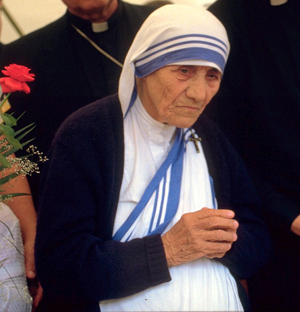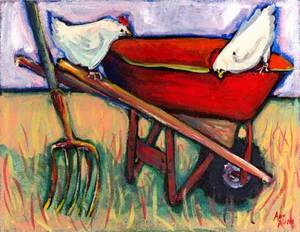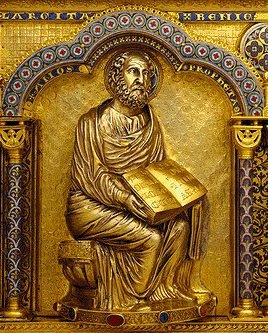
September 9, 2018, Season of Creation 2

Pictures and text from this Sunday, Sept. 9
The Week Ahead…
Sept. 10 – 4pm, Vestry
Sept. 12 – 10am-12pm, Ecumenical Bible Study
Sept. 14 – 7:30am, ECM at Horne’s
Sept. 14 – Holy Cross Day
Sept. 16 – 10:00am, Living the Good News Christian Ed
Sept. 16 – 10:00am, Season of Creation Christian Ed – Adults
Sept. 16 – 11:00am, Season of Creation 3, Holy Eucharist II
Please bring bread that will be suitable for distribution at Village Harvest on Wednesday. We rarely have the opportunity to offer bread for the distribution.
Sept. 16 – Stewardship pledge cards distributed
Sunday, Sept 16 Readings and Servers
Holy Cross Day, Sept 14
See Our Collection of Crosses

"O BLESSED Saviour, who by thy cross and passion hast given life unto the world: Grant that we thy servants may be given grace to take up the cross and follow thee through life and death; whom with the Father and the Holy Spirit we worship and glorify, one God, for ever and ever. Amen."
Holy Cross Day is Sept. 14 in honor of Christ’s self-offering on the cross for our salvation. The collect for Holy Cross Day recalls that Christ "was lifted high upon the cross that he might draw the whole world unto himself," and prays that "we, who glory in the mystery of our redemption, may have grace to take up our cross and follow him" (BCP, p. 192). The themes of Holy Cross Day are powerfully expressed by the hymn "Lift high the cross" (Hymn 473).
This day has been a part of the Eastern Church. The feast entered the Western calendar in the seventh century after Emperor Heraclius recovered the cross from the Persians, who had carried it off in 614, 15 years earlier. According to the story, the emperor intended to carry the cross back into Jerusalem himself, but was unable to move forward until he took off his imperial garb and became a barefoot pilgrim. It only has been celebrated in the Episcopal Church with the current prayer book
Christian Ed for Children – Living the Good News
In 2011-2012 we emphasized the lectionary for both Adult Ed and Children using “Living the Good News”. We are returning to it in the fall of 2018 for children of all ages. It has a supporting introduction on Youtube.

From their website Living the Good News is:
- Lectionary-Based
With Living the Good News, your church’s education program focuses on the same cycle of weekly readings used in your worship services; it also provides an opportunity for everyone in your education program, from Nursery to Adult, to center on the same theme, providing a "whole community" approach.At the youngest levels, the curriculum almost always (but not exclusively) focuses on the gospel reading. The Adult level always includes ALL the readings. As you go down in age level, fewer of the readings are included, until, at Primary and below, it is almost always the gospel.
Lectionary, Season of Creation 3, Year B
I. Theme – Remembering the source of our resources
God led the Israelites out of slavery, provided manna for them in the wilderness, and at last brings them to the promised land. Now, it’s up to them, with the resources that God provides for them, to provide for themselves, but not to forget God’s generosity in the process. We, the wealthy of the world, when we have all we need and then some, may be tempted to do exactly what the passage in Deuteronomy warns against. “My power and the might of my own hand have gotten me this wealth,” forgetting that God provided all we need to make our wealth possible, and that all we have ultimately belongs to God. Because we’re human, we will experience times when all is not well, when we lack what we need, when all seems lost. And then, as faithful Christians, we have patience and trust that God’s generosity will not fail. After three days in the desert, listening to Jesus, the crowds were famished. Jesus fed them, just as God had fed the Israelites in the wilderness. And then, he sends them away. But what they’ve been fed hopefully allows them to go back and use the resources they’ve been given more fruitfully and faithfully.
Christian Ed for Adults – Season of Creation for Adults, 10am Parish House

During this four week series starting Sept 9, we’ll consider and discuss scriptures that illustrate the theme of the week, spend some time in prayer based on the theme, and leave with some ideas to consider during the week that follows.
Week 1 – Theme 1—September 9 Finding God in Creation
“God is present in and through creation. We can better understand the character of God by seeing how God interacts with all of creation. The more we know of God, the more we grow in our love for and connection to God and what God has created.”
Read more..Season of creation for adults
Lectionary, Season of Creation 3, Year B
I. Theme – Remembering the source of our resources
God led the Israelites out of slavery, provided manna for them in the wilderness, and at last brings them to the promised land. Now, it’s up to them, with the resources that God provides for them, to provide for themselves, but not to forget God’s generosity in the process. We, the wealthy of the world, when we have all we need and then some, may be tempted to do exactly what the passage in Deuteronomy warns against. “My power and the might of my own hand have gotten me this wealth,” forgetting that God provided all we need to make our wealth possible, and that all we have ultimately belongs to God. Because we’re human, we will experience times when all is not well, when we lack what we need, when all seems lost. And then, as faithful Christians, we have patience and trust that God’s generosity will not fail. After three days in the desert, listening to Jesus, the crowds were famished. Jesus fed them, just as God had fed the Israelites in the wilderness. And then, he sends them away. But what they’ve been fed hopefully allows them to go back and use the resources they’ve been given more fruitfully and faithfully.
Focus on 5 areas of the Environment in the Season of Creation

We have taken the five Sundays’ readings in the Season of Creation and highlighted a specific environmental area each week. (This week, food, last week earth.) How is this area affecting us ? What can we do at St. Peter’s and individually to improve our use of them ?
Isaiah 55:9-10
“8 For as the heavens are higher than the earth,
so are my ways higher than your ways
and my thoughts than your thoughts.
10 For as the rain and the snow come down from heaven,
and do not return there until they have watered the earth,
making it bring forth and sprout,
giving seed to the sower and bread to the eater.”
Collect
“O God, creator of heaven and earth, you have filled the world with beauty and abundance. Open our eyes to behold your gracious hand in all your works; that rejoicing with your whole creation, we may learn to serve you with gladness; for the sake of him through whom all things were made, your Son, Jesus Christ our Lord. ”
James 5:7-8
“Be patient, therefore, beloved, until the coming of the Lord. The farmer waits for the precious crop from the earth, being patient with it until it receives the early and the late rains. 8 You also must be patient. Strengthen your hearts, for the coming of the Lord is near. ”
4. Climate – Sept 23
Romans 8:18-21
“18 I consider that the sufferings of this present time are not worth comparing with the glory about to be revealed to us. 19 For the creation waits with eager longing for the revealing of the children of God; 20 for the creation was subjected to futility, not of its own will but by the will of the one who subjected it, in hope 21 that the creation itself will be set free from its bondage to decay and will obtain the freedom of the glory of the children of God. ”
5. Energy – Sept 30
Isaiah 40:28-31
“The LORD is the everlasting God,
the Creator of the ends of the earth.
He does not faint or grow weary;
his understanding is unsearchable.
29 He gives power to the faint,
and strengthens the powerless.
30 Even youths will faint and be weary,
and the young will fall exhausted;
31 but those who wait for the LORD shall renew their strength,
they shall mount up with wings like eagles,
they shall run and not be weary,
they shall walk and not faint.”
Focus on Food
1. Article The latest Food Insecurity Figures released in 2018 (based on 2016)
2. Video on Food Insecurity
3. Video on Dealing with Food Waste
Events in the Season of Creation
The Sierra Club issued a challenge last year, asking mayors around the U.S. to commit to supporting 100 percent clean energy by 2035/2050.
The Global Climate Action Summit is scheduled in San Francisco, Wed., Sept 12 to Fri, Sept. 14

“As the wraths of human-caused climate change are increasingly felt across our shared planet, the moral case for climate action has never been clearer. Recent climate catastrophes — the fires in California and Greece, deadly heat waves from East Asia to India and Pakistan to Europe, devastating floods in Thailand and Laos — could paralyze us with fear. But what right have we to call ourselves people of faith if we stand by and watch as others suffer, or if we stand idle instead of preventing our own suffering? We cannot wait to practice what we preach” – Rt. Rev. Marc Handley Andrus, Episcopal Bishop of California
You can virtually attend the Summit by streaming it live on YouTube, Facebook and Twitter.
From their website – “The Global Climate Action Summit will bring leaders and people together from around the world to “Take Ambition to the Next Level.” It will be a moment to celebrate the extraordinary achievements of states, regions, cities, companies, investors and citizens with respect to climate action.
“It will also be a launchpad for deeper worldwide commitments and accelerated action from countries—supported by all sectors of society—that can put the globe on track to prevent dangerous climate change and realize the historic Paris Agreement.
“The decarbonization of the global economy is in sight. Transformational changes are happening across the world and across all sectors as a result of technological innovation, new and creative policies and political will at all levels.
Links:
1 Website
2 Interfaith service Wed. Sept 12 7pm online from Grace Cathedral – Signup for the Livestream
From the site -“The Global Climate Action Summit gets underway in San Francisco on September 12, 2018, members of diverse spiritual and religious communities from around the world will join with global climate leaders for a multi-faith service of connection, reflection, and commitment to climate action. At the heart of the service at Grace Cathedral will be an invitation for participants and livestream viewers to not only reflect on and be inspired by the wonders of our sacred Earth, but also to make bold new commitments to protecting our planet and its inhabitants from the ravages of climate change.”
From the site -“The service includes a multi-faith procession; music and spoken word drawn from a variety of faith and spiritual traditions; and video greetings and words of encouragement from global faith leaders including His Holiness the Dalai Lama (via video); His All-Holiness Ecumenical Patriarch Bartholomew, Archbishop of Constantinople (via a representative); the Most Reverend Michael B. Curry, Presiding Bishop and Primate of the Episcopal Church (via video); and members of Zen Master Thich Nhat Hanh’s monastic community. During the service, climate action commitments from a variety of religious and spiritual leaders and communities will be announced.”
Stewardship – Sept 16, Distribution of Pledge Cards
Stewardship is … “Using the gifts that God gives us to do the work God calls us to do.” No gift is too large for God’s work. We give back as we are given by God –
Pledging should be about growing your faith. As your faith grow so should your giving.
Make your pledge for 2019 and return it Sunday, Oct. 7
The Commitment
A better word than pledge card is commitment card. We commit so we can give:>
- Commit to help us reduce hunger in this area, through the Village Harvest Distribution
- Commit to us to bring hope to our community,
- Commit to help us bring comfort to those suffering in sickness or loneliness,
- Commit to help us in Christian education and encourage fellowship.
- Commit so we can make a difference.
What should be our commitment to what God has given us ?
God calls us to share in God’s mission of caring for the world, using all the gifts God has given us. Our gifts includes those of treasure Over 80% of the funds used to support and plan for ministry in a year come from pledges.
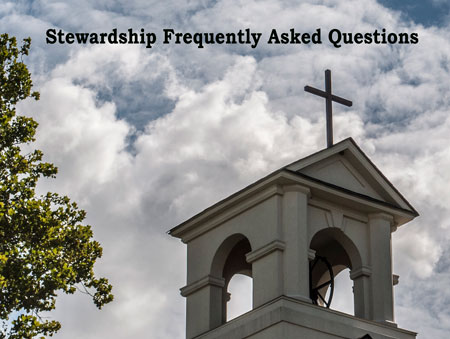
Got Questions ?
Is my stewardship defined only by the money I give to the church?
Why should I pledge ?
How much should I give ?
See our Faq
Why Give to St. Peter’s
- Giving is an act of worship along with prayers, sermons and music. Get your money’s worth of the service and give—it is a blessing to be able to do so. Moreover, give till it feels good!
- Giving allows our ministries to expand. As Scott Gunn writes at Forward Movement, “Jesus was always taking his followers to new places, literally and metaphorically… As followers of Jesus, I think we’re called to go to new places.”
- Giving acknowledges the reality is that all we have was given by God anyway. All that we are is a gift . From Deuteronomy – The Lord “gives you power to get wealth” which includes labor, influence, finances and expertise.
- Giving is part of our responsibilities in the baptismal covenant (look in the Prayer Book, pgs. 304-305). We commit our lives to reconcile ourselves to God and to one another. Lives are transformed with our gifts to change and repair a broken world as we reconcile ourselves to God. As Bishop Curry likes to say -“change the world from the nightmare it often is into the dream that God intends.”
- We freely receive from God so we should freely give back. We mess up in so many ways in our lives but grace is never held back by God so don’t withhold your gifts from God.
Connecting our Stewardship Campaign to the Season of Giving

Language from the Bible supports both the Season of Creation and our pledge campaign using the language of – planting, growth, production of fruit, and feeding.
Here’s some of our language and imagery, linking these practices, both ancient and continuing, with our common life at St. Peter’s:
- Plant: We begin with the seeds: Worship and prayer, baptism, evangelism, welcoming, pastoral care
- And the seeds soon grow: Education, communications, upkeep of buildings and grounds
- And produce fruit: Fellowship, belonging, new members, confirmation, marriages
- To feed people who are hungry in body and spirit: Village Harvest, Village Dinner, Christmas and Thanksgiving Season of Giving -welcoming community groups to our Church
- And our roots are deep: Tradition, reconciliation…
- Settled into the ground of our being: Jesus Christ
- Watered by the vows of the Baptismal Covenant – to continue in worship, repent and return, respect the dignity of others.
- Jesus said, “I am the vine, You are the branches…bear much fruit.”
- All of this depends on your gifts, regular income that provides the rector and staff; that lights, heats, and cools our buildings, that provides materials for worship, for service, for outreach.
Prayers for the Earth
Based on the Fifth Mark of Mission

To Strive
God, creator of the universe,
Fill us with your love for the creation,
for the natural world around us,
for the earth from which we come
and to which we will return.
Awake in us energy to work for your world;
let us never fall into complacency, ignorance,
or being overwhelmed by the task before us.
Help us to restore, remake, renew. Amen
To Safeguard
Jesus, Redeemer of the World,
Remind us to consider the lost lilies,
the disappearing sparrows;
teach us not to squander precious resources;
help us value habitats: seas, deserts, forests
and seek to preserve this world in its diversity.
Alert us to the cause of all living creatures
destroyed wantonly for human greed or pleasure;
Help us to value what we have left
and to learn to live without taking more than we give. Amen
Integrity of Creation
Spirit of the Living God
At the beginning you moved over the face of the waters.
You brought life into being, the teeming life
that finds its way through earth and sea and air
that makes its home around us, everywhere.
You know how living things flourish and grow
How they co-exist; how they feed and breed and change
Help us to understand those delicate relationships,
value them, and keep them from destruction. Amen
To Sustain
God, of the living earth
You have called people to care for your world –
you asked Noah to save creatures from destruction.
May we now understand how to sustain your world –
Not over-fishing, not over-hunting,
Not destroying trees, precious rainforest
Not farming soil into useless dust.
Help us to find ways to use resources wisely
to find a path to good, sustainable living
in peace and harmony with creatures around us. Amen
To Renew
Jesus, who raised the dead to life
Help us to find ways to renew
what we have broken, damaged and destroyed:
Where we have taken too much water,
polluted the air, poured plastic into the sea,
cut down the forests and soured fertile soils.
Help all those who work to find solutions to
damage and decay; give hope to those
who are today working for a greener future. Amen
Anne Richards, Mission Theology Advisory Group, Resources available on www.ctbi.org.uk The Dispossession Project: Eco-House
|
2. Contact the Rev Catherine Hicks, Rector 4. Sept., 2018 Server Schedule 5. Latest Newsletter-the Parish Post (Sept, 2018) 6. Calendar 9. Latest Sunday Bulletin (Sept. 16, 2018 11:00am), and Sermon (Sept. 9, 2018) |

Block Print by Mike Newman
Projects
| Green | Ordinary Time | Jun 3-Oct 31 | |


3-Minute Retreats invite you to take a short prayer break right at your computer. Spend some quiet time reflecting on a Scripture passage.
Knowing that not everyone prays at the same pace, you have control over the pace of the retreat. After each screen, a Continue button will appear. Click it when you are ready to move on. If you are new to online prayer, the basic timing of the screens will guide you through the experience.

Daily meditations in words and music.

Your daily prayer online, since 1999
"We invite you to make a ‘Sacred Space’ in your day, praying here and now, as you visit our website, with the help of scripture chosen every day and on-screen guidance."

Saints of the Week, Sept. 9 – Sept. 16
|
9
|
Constance and her Companions, Martyrs, 1878 |
|
10
|
Alexander Crummel, 1898 |
|
11
|
Harry Thacker Burleigh, Composer, 1949 |
|
12
|
John Henry Hobart, Bishop of New York, 1830 |
|
13
|
|
|
14
14 |
Holy Cross Day Cyprian, Bishop and Martyr of Carthage, 258 |
|
15
|
James Chisholm, Priest, 1855 |
|
16
|
Ninian, Bishop, c. 430 |











































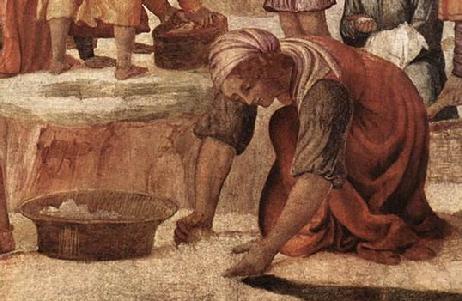











 "So the sacraments hold this unusual place in the Church, in that they are both central to our life of faith and yet also can be so very confusing. In an attempt to clarify the connect between the sacraments and our daily lives, I’ll start with a phrase from St. Augustine: “visible words.” I find this phrase attractive because it helps me appreciate Baptism and Communion as the visible, physical counterpoint to the preaching and teaching of the church. That is, the sacraments are the embodiment of the proclaimed and heard gospel in physical form, the gospel given shape in water, bread, and wine. They serve us, then, as physical reminders of what we have heard and believe simply because we are physical creatures and remembering and believing can be so hard. And so we have the gospel preached to us so that we may hear it, and we have the same gospel given to us so that we may taste and touch and feel it with our hands and mouths and bodies.
"So the sacraments hold this unusual place in the Church, in that they are both central to our life of faith and yet also can be so very confusing. In an attempt to clarify the connect between the sacraments and our daily lives, I’ll start with a phrase from St. Augustine: “visible words.” I find this phrase attractive because it helps me appreciate Baptism and Communion as the visible, physical counterpoint to the preaching and teaching of the church. That is, the sacraments are the embodiment of the proclaimed and heard gospel in physical form, the gospel given shape in water, bread, and wine. They serve us, then, as physical reminders of what we have heard and believe simply because we are physical creatures and remembering and believing can be so hard. And so we have the gospel preached to us so that we may hear it, and we have the same gospel given to us so that we may taste and touch and feel it with our hands and mouths and bodies.












